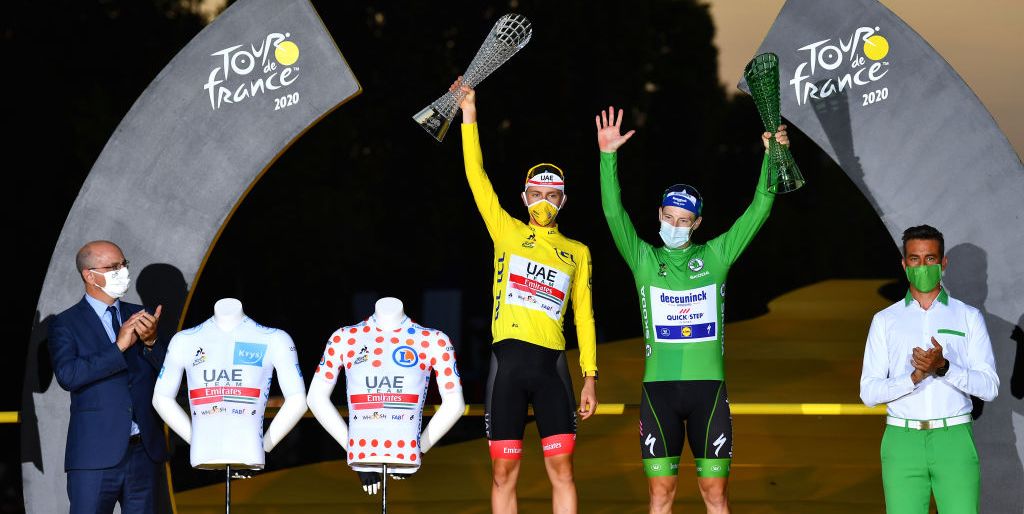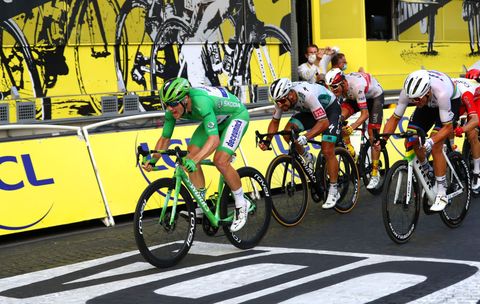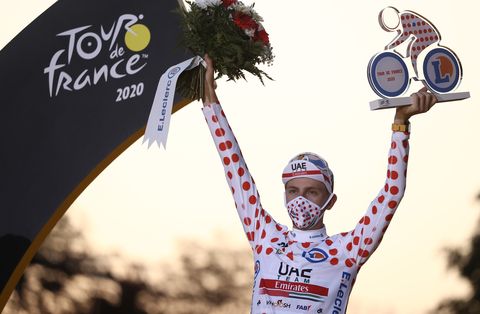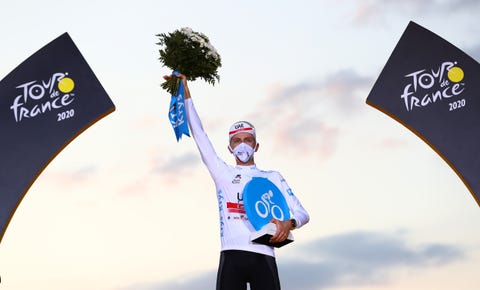[ad_1]
Stuart franklinGetty Images
There are four jerseys awarded during the Tour de France each year. Most fans know the biggest one: the overall leader’s yellow jersey. But the other three – the green, polka dot and white jerseys – also play an important role, and earning one can not only serve as a stepping stone to greater glories for a professional runner, but can also be seen as an important victory in self.
Here is a simple description of what each jersey means and what a Tour rider must do throughout the race to wear it.
History of the winners of the tour
Yellow jersey
For the most part, the legendary yellow racing jersey, or yellow jersey, is above all, since it designates the rider who leads the general classification. After each stage, the officials calculate who has the fastest time throughout the race. The jersey then goes to the leader of the general classification, who will wear it during the next stage. And because it’s time-based and not points-based, yellow won’t necessarily go to the winner of the given day’s stage.
Check out how the yellow Tour jerseys are made so quickly:
The contenders for yellow – and, therefore, the overall Tour de France title – are complete cyclists and intelligent tacticians with skills in both climbing and time trial. They also need to show enough strength to keep the pace of the peloton, especially as rival teams work together to bring down the leader at every possible opportunity.
Green Jersey
The green jersey, or green jersey, goes to the leader of the points classification. Runners can earn these points in intermediate sprints that arrive mid-stage, although most are earned at the finish of the stage for the first 10-25 runners to cross. The number of points awarded depends on the profile of the day’s stage, whether flat or mountainous, for example.
Although known as the “sprinter’s jersey,†green will ultimately go to a complete and consistent runner. While most points are traditionally earned at the finish of the flattest stages (where sprinters can shine), the competition has also gone to runners who show tremendous persistence, picking up points where they can. .
Polka dot jersey
The polka dot jersey goes to the leader of the mountain ranking, otherwise known as the king of the mountains. Points in this competition are awarded to the first riders who reach the top of the designated climbs on each stage.
The climbs of the Tour de France are classified from category 1 (the most difficult) to category 4 (the least difficult). A fifth class, except category (“Out of category”), is reserved for the most demanding climbs. The number of points awarded depends on the difficulty of each climb, although sometimes shorter or smoother climbs will reach a higher category if they reach the end of a stage.
Of course, the polka dot rider must be a solid climber. Often times this goes to small, lightweight guys with very high power outputs. The KoM competition takes on its full meaning once the race heads to the mountain stages, where most points are available.
White Jersey
The white jersey, or white jersey, goes to the leader of the general classification aged 25 or under (as of January 1 of the given race year). Simply put, it goes to the best young rider with the lowest overall time. For young all-rounders who are ambitious in the race, winning the white jersey is like winning the yellow one.
Other rewards
There are two other rankings that are not awarded with a special jersey: the Prize for Combativeness and the Team Ranking.
While largely a symbolic prize, Combativity Award winners still get a podium appearance when the race ends in Paris. After each stage outside the time trial, a jury designates the most aggressive rider of the day. Not necessarily the winner of the stage, it could be someone who systematically attacked, instigated a breakaway or played a key role in the outcome of the stage. This runner then wears a red bib (instead of black) in the next day’s stage. A Super Combativity Award is presented on the last stage to the most aggressive rider on the entire Tour.
The team classification is based on the collective time of the three best placed riders in the general classification of each team. The best team then wears their bibs on a yellow background, rather than a classic white background, and also have the option of wearing yellow helmets.
This content is created and maintained by a third party, and uploaded to this page to help users provide their email addresses. You may be able to find more information about this and other similar content on piano.io
[ad_2]





